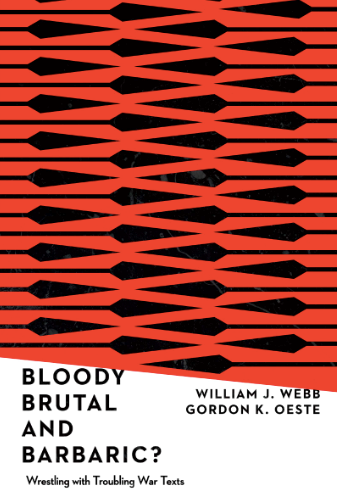Jesus as Holy Warrior in the Book of Revelation

If Jesus is a holy warrior in the Book of Revelation, can we just stop worrying about God as warrior and holy war in the Old Testament? To finish off, William Webb and Gordon Oeste (Bloody, Brutal, and Barbaric?) know that one of the major arguments against pacifism and against holy war traditions having value for Christian theology is the Jesus of the Apocalypse. Isn’t he there a warrior – a consummate one at that?
They take this on and they do by arguing that the War of Jesus is a metaphorical war and not a physical war, so fold up your dispensational charts and maps!
This is a wonderful new book and I hope every pastor has a copy on the shelf. Certainly all theological libraries need the book. I’ve learned a lot over the years from William Webb and no one today is as exacting as he has been in sorting out the hermeneutics of troubling texts. Thanks again to Bill for this book.
Revelation is a problem however:
John’s Apocalypse looms especially large in putting together the entire canonical portrait of holy war because some Christian scholars defend the complete rightness, goodness, and ethical purity of Old Testament holy war (the traditional view) by casting a spotlight on the apocalyptic Jesus. The argument could be framed like this: we need to accept Yahweh’s war actions because Jesus as the apocalyptic warrior wields the sword just like the God of the Old Testament. Along these lines Tremper Longman portrays Jesus as “just as violent” as the Yahweh warrior of the Old Testament …
Longman is not alone, as I’ve heard this recently of some other theologians.

Similarities between holy war traditions and the Apocalpse (quoting Webb-Oeste here):
Similarity one: War language. The most graphic depiction of war comes in Revelation 19, where John describes what he sees in an apocalyptic vision:
Similarity two: Holy war source traditions. The source traditions for war material in Revelation draw it even closer to Old Testament holy war draw it even closer to Old Testament holy war [stuff about Babylon] While the actual referent is Rome or perhaps an escalated Rome-like enemy of the future, the important point is that these enemies of first-century Christians were painted with the brushstrokes of historic battle enemies of Israel.
Similarity three: Holy war and idolatry objectives. The objective of eliminating idolatry-at the heart of Old Testament holy war-is also found at the core of the war material in Revelation.
But there are major Differences:
- Difference one: No indiscriminate slaughter of noncombatants.
- Difference two: No ethnic annihilation/genocide.
- Difference three: No reward of good-looking virgins.
- Difference four: The final battle is really no battle at all. A fourth difference-and this is a big one-is that the greatest battle of apocalyptic holy war is no literal battle whatsoever. The meaning is metaphorical. A number of clues suggest that John never intended the apocalyptic battle to be read literally.First clue: Only one “little” weapon. Second clue: Only one warrior fights with the one sword.7hird clue: A sword in the mouth, not in the hand.Fourth clue: All of humanity is united (not divided) in war against God.
- Difference five: No eternal driving out of all “Canaanites" from the new Eden.
- Difference six: No more one-size fits-all justice.
- Difference seven: The saints fight with weapons of virtue (not violence).
I don’t know how many today embrace the metaphorical war of Jesus in the Apocalypse, but this defense of the view comes from a far more informed perspective about holy war texts than most.
Jesus Creed is a part of CT's
Blog Forum. Support the work of CT.
Subscribe and get one year free.
The views of the blogger do not necessarily reflect those of Christianity Today.


















